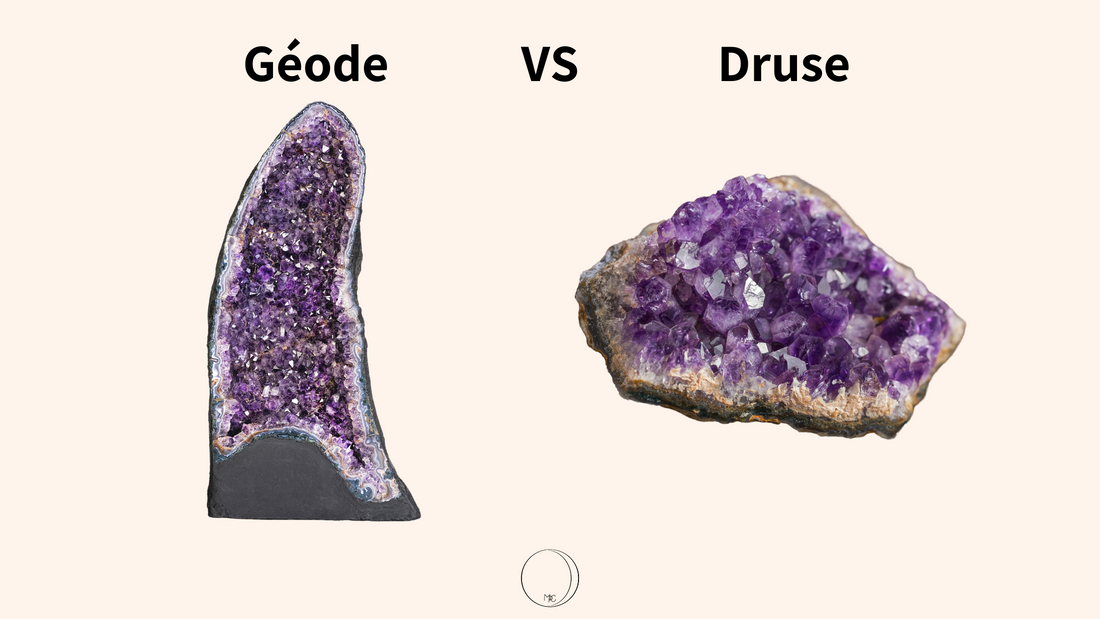Geodes and druses are two types of fascinating mineral formations that are found all over the world. Although they may seem similar at first glance, they have distinct differences in terms of formation, structure and characteristics. In this article, we will explore these differences to better understand these natural wonders.
Geodes: Natural Treasures of Hidden Crystals
Geodes are hollow mineral formations that are usually found in volcanic or sedimentary rocks. They form when cavities are created inside rock, often as a result of geological processes such as the dissolution of minerals or the formation of gas bubbles. Over time, these cavities fill with minerals, usually in the form of crystals, creating geodes.
Geodes can contain a wide variety of minerals, including quartz, amethyst, calcite and citrine. The size of the crystals inside a geode can vary greatly, from tiny crystals to large, spectacular formations.
Druses: Sparkling Crystal Clusters
Druses are clusters of crystals that form on the surface or inside cavities in rocks. Unlike geodes, which are hollow inside, druses grow from a solid surface or wall and then spread outward. They form when mineral solutions saturated with minerals settle and crystallize around a solid core, forming a cluster of tightly bound crystals.
The crystals that make up a druse can be uniform in size or vary in size, creating a sparkling, textured look. The most common minerals found in druses include quartz, amethyst, calcite and rock crystal.
Key Differences Between Geodes and Druses
1. Formation: Geodes form inside hollow cavities in rocks, while druses form on the surface or inside solid cavities.
2. Structure: Geodes are hollow inside and often contain a variety of minerals in crystal form, while druses are clusters of closely related crystals that grow from a solid surface or wall .
3. Appearance: Geodes may have an external opening that allows access to the hollow interior, while druses often form a flat surface or deep cavity filled with crystals.
4. Crystal Size: Crystals inside geodes can vary greatly in size, while crystals in druses are generally smaller and more uniform in size.
Uses and Appreciations
Both geodes and druses are valued for their beauty and aesthetic value. They are often used in interior decoration, jewelry and mineral collecting. Due to their energetic properties and symbolism, they are also used in lithotherapy and meditation for their ability to bring positive energies and balance the chakras.
Conclusion
Geodes and druses are two types of fascinating mineral formations that offer a variety of shapes, textures and dazzling colors. Although similar in many ways, they have distinct differences in formation, structure and appearance. Whether used for decorative, energetic, or meditative purposes, geodes and druses continue to capture the imagination of collectors and mineral enthusiasts around the world.
Do not hesitate to visit my online store mespetitscailloux.com


